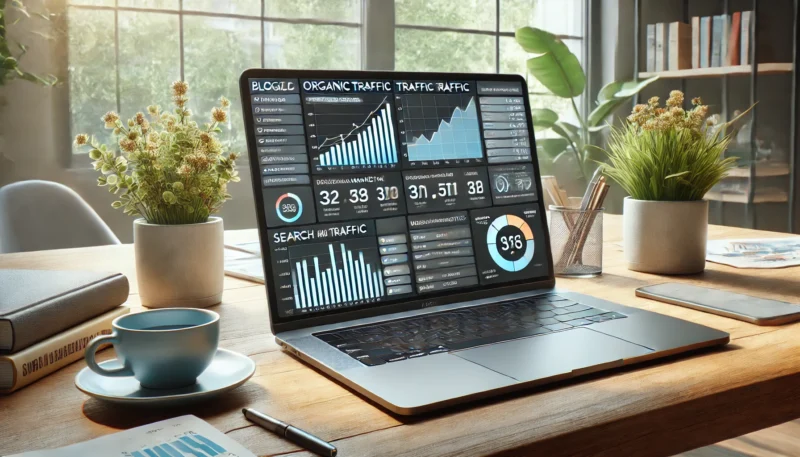Organic traffic is one of the most valuable sources of visitors for any website — whether you’re running a blog, an e-commerce store, or a business site. In 2025, understanding and leveraging organic traffic is more essential than ever before, especially with evolving search algorithms and increased competition for attention online.
What Is Organic Traffic?
Organic traffic refers to the visitors who land on your website from unpaid search engine results. These users typically find your content through platforms like Google, Bing, or DuckDuckGo after searching for a keyword or phrase.
Unlike paid traffic — where you pay to appear at the top of the results — organic traffic comes from search engine optimization (SEO) efforts. The better your SEO, the more likely your pages will show up for relevant search queries.
Why Organic Traffic Is So Important
Here’s why organic traffic is such a powerful asset in 2025:
1. It’s Sustainable Over Time
Once your pages are well-ranked, they can continue bringing in visitors for months or even years without additional cost. Unlike ads that stop the moment you pause a campaign, organic content keeps working for you.
2. It Builds Authority and Trust
Search engines prioritize websites that demonstrate relevance, trustworthiness, and authority. When users find your site organically, it’s often because Google considers your content high-quality. This adds to your brand’s credibility.
3. It Has Higher Click-Through Rates (CTR)
Organic results tend to attract more clicks than ads. Most users skip paid results and go straight to the top organic links. That means better chances of attracting engaged readers who trust your content.
4. It’s Cost-Effective
While SEO takes time and effort, it doesn’t require continuous investment like paid ads. A well-optimized blog post could rank for years and generate thousands of visits — all without spending another dollar.
How Organic Traffic Has Evolved in 2025
SEO isn’t the same as it was five or ten years ago. Here are some major shifts you need to be aware of this year:
1. Google’s Helpful Content Update
Google now prioritizes people-first content. This means your articles should be written for real readers, not for algorithms. Fluff-filled, keyword-stuffed posts are more likely to be penalized.
2. E-E-A-T Is More Relevant Than Ever
E-E-A-T stands for Experience, Expertise, Authoritativeness, and Trust. Your content should reflect your knowledge and offer real value. This includes:
-
Citing credible sources
-
Demonstrating hands-on experience
-
Showing who wrote the content and why they’re qualified
3. AI and Search Behavior
With the rise of AI-powered search engines and voice assistants, search behavior is changing. People use longer, more conversational queries. Optimizing for long-tail keywords and question-based searches is a smart move.
4. Mobile and Core Web Vitals
Most users now browse from mobile devices. In 2025, Google’s mobile-first indexing and Core Web Vitals continue to play a huge role in rankings. Your site must load fast, be mobile-friendly, and offer a smooth user experience.
How to Boost Organic Traffic in 2025
If you’re serious about growing your organic traffic, here are key steps to follow:
1. Start with Keyword Research
Use tools like Google Keyword Planner, Ubersuggest, or SEMrush to find search terms your audience is using. Focus on terms with decent volume and low competition.
2. Create High-Quality, In-Depth Content
Don’t just aim for word count — aim for completeness. Cover the topic thoroughly, answer related questions, and provide examples. Add images, subheadings, and bullet points to improve readability.
3. Optimize On-Page Elements
Make sure your:
-
Title tags and meta descriptions are compelling and keyword-rich
-
Headings (H1, H2, etc.) are structured properly
-
URLs are clean and descriptive
-
Images have ALT text
-
Internal linking is strategic and helpful
4. Improve Your Site’s User Experience
Make sure your site is:
-
Fast loading
-
Easy to navigate
-
Mobile-friendly
-
Free from annoying pop-ups and distractions
5. Earn Backlinks Naturally
Write content worth sharing. Then reach out to other blogs, participate in communities, or create guest posts to build backlinks. Each link from a credible source boosts your authority.
6. Keep Content Updated
Google favors fresh, accurate content. Review and update older posts regularly — especially if your topic is subject to change.
Metrics to Track Organic Traffic Success
To measure your growth, track the following:
-
Organic sessions (via Google Analytics)
-
Keyword rankings
-
Click-through rate (CTR) from search results
-
Bounce rate and average session duration
-
Pages per session and overall user engagement
These insights will help you adjust and refine your strategy over time.
Final Thoughts: Organic Traffic Is a Long-Term Asset
In 2025, organic traffic is not just about “getting on Google” — it’s about building a trustworthy, helpful presence online that naturally attracts the right audience. While paid traffic delivers quick wins, organic traffic delivers long-term growth and brand strength.
If you’re consistent, focused, and user-centric, your SEO efforts will pay off — with traffic that costs nothing and converts well.

